In a conversation among some of the permabloggers, we started talking about modesty within LDS culture. Although I felt that everything that could be said about modesty has been said already, Ziff raised an interesting question of whether women with certain body types were more likely to be shown in the Ensign than women with other body types. Specifically, he posed the question of whether women with smaller breasts were more likely to be shown than women with larger breasts. Given that I like to code and analyze data almost as much as Ziff does (I mean, really, I doubt that anyone in the universe could love this as much as Ziff does), I decided to conduct an assessment of this very question. As I started looking through past Ensign issues, I realized that breast size was often difficult to code given that many women wear loosely-fitted clothing. I was also surprised to discover that women’s breasts were often obscured by their arms, other people (such as holding a child), or props (such as scriptures, hymnals or manuals). This lead me to rework my coding system to consider how often women’s breasts were covered by something in addition to clothing (arms, other people, props), or were only covered by clothing. Furthermore, I assessed the frequency that images of women’s breasts that were only covered by clothing showed women wearing form fitted vs. loose fitting clothing and when the clothing was form fitted, the frequency that women with larger and small breasts were shown.
As I continued my investigation, my sister pointed me to some specific guidelines for members who wish to submit photos for potential publication in the Ensign. I assume that these (or similar) guidelines are used for all photos printed in the Ensign. Within these guidelines, there are two that are directed specifically towards women: 1-Do not submit photos of women and girls with low or revealing necklines, gaping blouses, tight clothing (including tight clothing worn over other tight clothing), sleeveless or spaghetti-strap tops without a modest shirt worn underneath, clothing containing see-through fabrics or any other distracting element that draws attention to the body, and 2-Women’s dresses should cover the knees when sitting. (Just for your information, there is only one point of the guidelines that is directed specifically toward men: do not submit photos of men’s or boys’ neckties loosened or with untucked shirttails).
Methods I used a random number generator to select 3 issues of the Ensign from 2013, but excluded conference issues as images in those issues are somewhat different from what is normally included. I analyzed both photos and illustrations from the February, April, and July issues (Footnote 1). I coded each photo or illustration of a woman, but excluded images if: the individual was not clearly an adult; the individual was blurry, in a large crowd scene or a very small part of them was showing (just their face showing because they were standing almost completely behind other people); or the individual was not clearly a woman (this is more of an issue for illustrations of biblical times). Also, if the same photo illustration appeared multiple times in the issue, I only counted it once, and I did not count images that were included with information that directed reader to other sources (such as a webpage or another issue of the Ensign).
I coded each image of a woman to be in one of several categories and subcategories. The first category was for images of women whose breasts were fully or mostly covered by something other than their clothing, or their clothed breasts were not visible for another reason. This included the subcategories of: turned away (mostly showing someone’s back), cropped (photo cropped at or above the bustline), covered-prop (bustline mostly covered by an object), covered-body (bustline mostly covered by part of the individual’s body, such as their arm, or by someone else’s body). The second category was for images of women in which their breasts were only covered by clothing. This included the subcategories of: baggy clothing, and fitted clothing. Images of women with fitting clothing were further classified as showing women with relatively small breasts and women with relatively large breasts. Classifying images as portraying either baggy vs. fitted clothing required some subjective judgment, but I generally coded based on whether there was clear definition of the individual’s breasts beneath their clothing. For illustrations, I judged an image to be showing fitted clothing if there was some indication of the individual’s breasts with either shading, or lines to indicate the breast shape. Clothing in illustrations was coded as “baggy” if there were shadows that show a lot of folding of the fabric, or a generally flat color that showed no shape of the individual’s breasts beneath her clothing. I also categorized each image as either being a staged photo, a naturalistic photo, or an illustration. Once again, some subjective judgement was used to determine whether a photo was staged or naturalistic, but in most cases the distinction was fairly clear. Below are examples from some of the categories.
Fig 1. Illustration: Fitted clothing
Fig 2. Naturalistic Photo: Cropped
Fig 3. Staged Photo: Covered-Prop
Results Overall, there were 110 images of women that fit the criteria I described. In 56% of the images, women’s breasts were fully or mostly covered by something other than clothing or were not visible for some other reason (within this category, 15% were turned away, 19% were cropped, 27% were covered-prop, and 39% were covered-body). For, 44% of the images, women’s breasts were only covered by clothing. In these cases, 56% of women were wearing baggy clothing and 44% of women were wearing fitted clothing. Of the 21 images of women wearing fitting clothing, all 21 depicted women with relatively small breasts (Fig 4.).
Fig 4. Woman with small breasts wearing fitted clothing.
For both illustrations and naturalistic photos, the percentages were fairly evenly split between images of women’s breasts that were fully or mostly covered by something other than clothing or were not visible for some other reason (54% of illustrations, 55% of naturalistic photos) and women’s breasts that were covered only by clothing (46% of illustrations, 45% of naturalistic photos). However, for staged photos 64% depicted women with their breasts covered by something other than clothing or were not visible for some other reason, while only 36% depicted women whose breasts were covered only by clothing. For depictions of women in which their breasts were covered only by clothing, 44% of women in staged photos wore baggy clothing and 56% wore fitted clothing. The breakdown was similar for naturalistic photos with 50% in baggy clothing and 50% in fitted clothing. In contrast, illustrations depicted 62% of women in baggy clothing and 38% of women in fitted clothing. If you remember from my coding criteria, clothing was considered to be baggy in an illustration if the shape of the breasts was not defined. So a woman’s torso that was painted with no shading would be considered baggy clothing (see Fig 5. below). The fact that more women in illustrations wore baggy clothing than photos suggests that it is easier to simply not paint the shape of a woman’s breasts when illustrating women than it is to take photos of women that don’t show any shape of their breasts under their clothing.
Fig 5. The breastless mother?
Although only comprising 15% of the total images (but 27% of the category of women whose breasts were covered by something other than clothing or were not visible for some other reason), the cases in which women’s breasts were covered by props were particularly interesting to me. Covering women’s breasts by scriptures, manuals, hymnals, or generic books and papers appeared to be a popular choice (50% of the covered-prop category), while plants was also a popular choice (33% of the covered-prop category) (see Fig 6.). I found the specific illustration shown in Fig 7. to be an especially interesting case of hiding women’s breasts with hymnals. If you look at the front row of singers, you will notice that three of the singers are holding the hymnal at about the same height, but that the last woman on the row is holding her’s higher. Of course, I have no way of knowing whether this is deliberate or not, but the woman on the end has been illustrated with a fuller figure which would likely include larger breasts. Based on the trend to not show women with larger breasts in fitted tops, it’s possible that the artist wanted to show a woman with a fuller-figure, but didn’t want to show that she had larger breasts.
Fig 6. Plants, covering women’s breasts since the time of Eve.
Figure 7. Why is the woman at the end hiding her breasts with a hymnal?
Conclusions/Implications Overall, I found that 56% of images of women in the Ensign had their breasts partially or fully covered by something other than clothing or hidden in some other way. I recognize that instances of women’s breasts being covered by their arm, body of another person, or things in their environment is going to happen somewhat naturalistically in photos. However, 56% seems particularly high to me. It would be interesting to compare this result to the images of women portrayed in a family-friendly magazine that is not owned by the LDS church to assess whether this way of portraying women is fairly common or if it is unique to LDS publications. (If you have a suggestion for a magazine I could analyze, please include it in the comments below). Another assessment I would like to do is to evaluate how often men’s torsos in the Ensign are covered by something other than clothing or hidden in some other way. This would give me some idea of how naturalistic or intentional it is to cover women’s torsos with props etc. in LDS publications. Of the women whose breasts were only covered by clothing, 44% of them were wearing fitted clothing and in all cases the breasts of the women in these images were relatively small. This means that across all image types, only 19% of images clearly show the shape of a woman’s breasts and there are no cases of women who clearly have larger breasts being depicted.
How might these images affect how women and men in the LDS church think about and react to women’s bodies? It would be interesting to conduct some kind of survey or experiment to address this question, but given the lack of empirical data, I will make some suggested hypotheses about the possible effects of these images. First of all, members of the church may use the images in the Ensign to guide their own perceptions (whether consciously or unconsciously) of clothing that is modest. For one, I think that the implicit message is that the appearance of breasts should be minimized when possible. However, in real life, women are not still images and cannot constantly hide behind plants or hold manuals in front of their breasts so that others won’t see that they have them. Furthermore, greatly minimizing the appearance of breasts is a virtually impossible standard for women with larger breasts to live up to. Based on my analyses, the Ensign shows no examples of women who clearly have larger breasts. Therefore readers of the Ensign are left to assume that dressing modestly as a woman with larger breasts involves wearing very loose-fitting clothing, but for many women even very loose fitting clothing is not going to obscure the fact that they have large breasts. Furthermore, sometimes a choice to wear baggy clothing can contribute to feelings of body shame. Women may feel that their body is something that should be completely disguised under baggy clothing because they are unhappy with how their body looks and/or they fear that their body is something that will inevitably cause others to sin (Footnote 2). Additionally, the guidelines for image submission specifies that images should not include cleavage. However, even if women are wearing tops that typically don’t show cleavage, moving around and preforming everyday activities makes it possible that some cleavage may be shown at some point, especially for women with larger breasts. The Ensign appears to be sending the message that cleavage is always immodest and should be avoided at all costs. This could cause a good deal of trouble for some people who would have to always wear shirts with very high necklines or would have to be super conscientious every time they bend over in order to live up to that standard. This many lead women with larger breasts to feel that their bodies are inherently immodest, and may increase the likelihood that others will make those judgements about their bodies as well (Footnote 3).
Secondly, the Ensign (particularly the guidelines specifying which images are appropriate to submit to the Ensign) encourages highly subjective judgments about other people’s bodies. Every person will have a different definition of what constitutes “revealing necklines” or “tight clothing”, and what would even constitute “distracting element[s] that draws attention to the body”? Doesn’t clothing inherently draw attention to the body because it is worn on top of a body? The problem with these vague guidelines is that while an individual woman may feel that her clothing is appropriate, that doesn’t free her from the potential judgmental remarks and even public humiliation of others (as evidenced by countess stories of EFY and youth dance experiences). Take the case of the student who simply wanted to take an exam at BYUI but was unable to do so because the testing center employee made a highly subjective judgement that her clothing was too tight (see description of tight vs. form-fitting clothing in Footnote 4). In my opinion, the solution to this problem is not to make guidelines more specific (such as trying to figure out how exactly how much of someone’s knees should be covered), but rather to encourage respect of other people’s clothing choices and to discourage the policing of other people’s bodies.
Overall, I think the best way these issues can be addressed through the Ensign is by showing women with a wider variety of body types wearing a wider variety of clothing (and perhaps by showing more images of women whose bodies are not covered by props etc.). For example, below is an image of a woman with larger breasts who is wearing a form-fitting top. The tightness of this clothing is comparable to what I saw in some Ensign images, but based on my analyses, images like this are rarely (if ever) shown. I would argue that for a healthy, productive life, women with a variety of body types need to be able to wear clothing that allows them to comfortably move around in their environment without the fear that someone will judge them as being immodest or inappropriate. Additionally, I would argue that a culture that focuses a lot on discussing modesty, that shows only a limited range of acceptable ways to be modest, and encourages body-policing creates an environment in which women may worry excessively about how their bodies are affecting other people. This takes up valuable mental and emotional energy which could be better used for intellectual and spiritual development (see this video, especially around the 6 min mark).
Figure 7. Woman with larger breasts wearing a fitted top
Footnote 1: This analysis doesn’t include any of the text of the Ensign. I imagine that the guidelines for image submissions is reinforced in the actual text (maybe more so in the New Era).
Footnote 2: As Jennifer Finlayson-Fife puts it, “Modesty, or behaving in a spirit of moderation, includes honoring our sexuality-neither flaunting it nor masking it, neither seeking male approval nor rebuffing it. I see many LDS women unwittingly exposing the discomfort and self-doubt they feel in their bodies by dressing in shapeless or multilayered clothing. I also see many LDS women in my practice, strangers to their own sexuality, feeling a sense of self-betrayal for having disowned such a fundamental part of themselves.” Exponent II, Winter Issue 2014.
Footnote 3: Most men pictured in the Ensign are most often wearing white shirts, ties, and often suit coats. Thus, men are most often pictured wearing relatively loose-fitting clothing. It would be interesting to compare reactions to the images of men and women in the Ensign through an empirical study. However, I would postulate that the images of women may have a somewhat stronger effect on how women’s bodies are viewed and how women think about their own bodies because there are other aspects of church culture that promotes hyper-attention to and policing of women’s bodies that is not comparable to how men’s bodies are talked about.
Footnote 4: Realistically, I don’t think there is much difference between “tight” and “form fitting”, other than that “tight” has a negative connotation and, thus, is more likely to be used to describe clothing that someone disapproves of. From a stylistic standpoint, there are some indicators that clothing is too tight for your body such as buttons that gape and fabric that does not lay flat but is pulled in various points of the body when worn. Stylistically, form fitting clothing is generally considered to be clothing that is closely tailored to the shape of your body. However, form fitting clothing can often be judged to be immodest, especially on women with larger breasts. Furthermore, it is important to remember that clothing choices is inherently tied to financial resources. Clothing that it tailored to closely fit your body (and is not too tight or too loose) is often more expensive. Thus, people with less resources are less able to purchase clothing fitted to their body in the first place and are less able to purchase new clothing when their weight fluctuates. This is another reason why encouraging judgments of others’ clothing choices can be especially problematic.
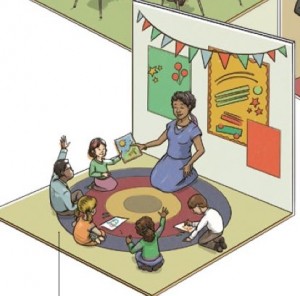
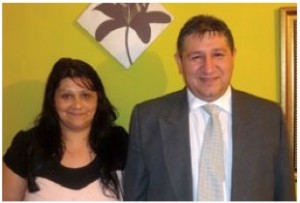
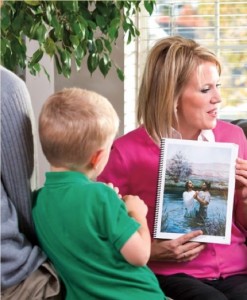

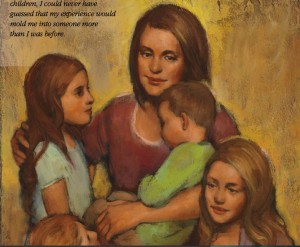
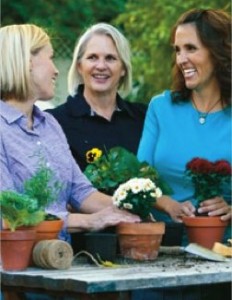
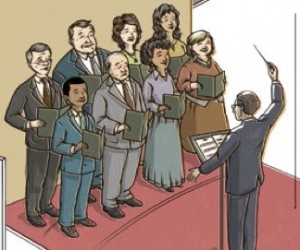
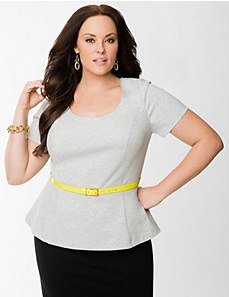
Fantastic analysis! I remember being frustrated as a teenager because it seemed that all of the Young Women resources showed girls who were 5’5″ and size 4. At 15 I was 5’10” and a thin/athletic size 10, and I felt out of place.
Once you see it, you can’t unsee it. The girl on the youth curriculum homepage is a perfect example, with the “Start teaching” banner strategically placed over her chest: https://www.lds.org/youth/learn/?lang=eng.
Fun post! And talk about going down the rabbit hole, Petra! I clicked on the “Young Women” link on that banner, and bam! four more photos of women whose breasts are all strategically covered.
I’ve been having half-formed thoughts recently about modesty being a gift we give each other, less about how you dress and more about how I see you — a whole person and not merely a collection of parts. I’m sure I’m not the first to think in this direction, but I’m struck at how powerfully our modesty discourse reinforces the second-class status of women, existing only in relation to men, and particularly in relation to men’s sexuality.
Don’t we have a better way to spend our time?
This was very interesting. Thanks for your careful analysis. I don’t always like the text in the Ensign, but I usually like looking at the people because they look like regular people–people like me. Many other magazines show women who are either shaped like pre-pubescent boys (e.g., Cosmo) or shaped very voluptuously (e.g., Maxim). It felt refreshing to me to see average-sized people. But if the underlying message is that breasts need to be hidden or that large breasts are somehow immodest, then that is problematic.
I’d be interested to see your further analyses comparing these findings to other family-friendly magazines (maybe Parents or Disney Family Fun) and to how the men in the Ensign are presented. Thanks for your post.
Absolutely stellar, Beatrice! I love your analysis!
You said, “The Ensign appears to be sending the message that cleavage is always immodest and should be avoided at all costs.”
I think you could probably say this even more strongly. Echoing Lilian, I think the Ensign appears to be sending the message that large breasts are immodest and should be avoided at all costs. Of course, living while having large breasts is like driving while black. People might harass you for it, but it’s not like it’s something you can change. (Well, short of surgery.)
I know it’s easy for me as a reader to suggest more analyses, but I’d love to see the one you already mentioned about looking at how often men’s torsos are covered by props. I’d also be curious to see whether large breasts have become verboten recently, or if Ensigns of the past would show the same pattern.
You’ve only made a point here if you can show that the results for pictures of men are different. In many cases, such as in the picture of the young woman provided in the link a few messages upthread is clearly a basic graphic design decision. We wouldn’t want the banner over her face, right? I think you are making a real stretch here. Show us the results of a similar project dealing with photos of men in the Ensign. If the results are considerably different, and male chests are rarely covered by anything, you’ll have an argument.
I think you are right about the large breasts issue (although if I were ever in a picture captioned “woman with small breasts,” I might cry); I’m less convinced about the prop issue, simply because chest-height is just a natural place for props to be–they don’t obscure the face, and you can hold them.
I think you might want to look at the guidelines for sister missionaries next. While overall commendable, I note that the fuller-figured sisters always wear blazers, jackets, multiple layers, etc. This is one option for hiding larger breasts . . . unless it is over 80 degrees.
J Man, I had already taken a quick look at the “Learning Resources for Youth” pages that Petra linked to, skimming the section for Young Women. Uniformly, the pictures either included women with small breasts or with their chests obscured in some way (e.g. cropped out of the picture, covered with a prop).
Following your comment, I went back to look at the Aaronic Priesthood section. I was quickly able to find several pictures that displayed male chests in all their white-shirted glory, un-obscured by any prop more significant than a necktie.
Certainly, there were photographs of men with their chest cropped out, but now that I’m looking for the contrast between photographs of men and women, it wasn’t hard to find male chests in significant numbers. Not a systematic study by any means, but enough to raise a serious question in my mind as to whether these editing decisions were dictated exclusively by basic graphic design decisions.
A review of the photographs on both the Aaronic Priesthood and Young Women section tells me that a portion of the selection toward smaller bust size may be a result of the choice of almost exclusively very slender models for both genders. That may be an artistic decision that is problematic for other reasons, but gives more weight to your question, J Man, as to whether this is at least partially a design decision.
Thanks for all the comments so far. I certainly agree that doing a similar analysis for men would strengthen the argument. I hope to be able to do that analysis in the future. However, besides the issue of whether women’s chests are covered more than men’s, I still find it quite interesting that only certain body types are clearly shown in the Ensign and other body types seem to be either covered up (by baggy clothing or props, etc.) or completely missing.
I always find the hiding behind things amusing in the temple presentation. I’d like to see them naked as they were until SATAN said it was a problem.
There is obviously a very puritanical modesty police person somewhere in the magazine dept,
Perhaps we could have a formal calling in each ward, probably best filled by a Priest aged YM
It would be funny if it weren’t so sad, how powerful the Utah culture is in the church.
Like Julie M. Smith I was thinking that a review of the sister missionary dress guidelines is where this hypothesis should really be tested. They deliberately attempted to choose models of all sizes.
“I’d like to see them naked”
Uh… you probably ought to search out that kind of movie in other places…
Great analysis, and it quantifies something that I’ve felt but been unable to articulate.
I’m short and thin but on the busty side for my frame size. I developed earlier than my peers, and as soon as I did, there were whispers all around that I was a slut because I had breasts. (Like, if I had them, I must be using them or something.) I thought it was ridiculous, but it did still sting that I had an “unrighteous” body type.
I had a companion in the MTC who was blonde, about a size 12, and a DD cup. She dressed perfectly appropriately within missionary standards (this was back in 2003 when missionary dress standards were even more conservative than today), but one day our MTC teacher pulled her aside and said that she needed to wear more conservative clothing because she was “tempting the elders”. She was hurt, and I was angry on her behalf. I confronted the elders and told them what the teacher had said and that they needed to get over it. They all denied that they had expressed any such sentiment and were genuinely baffled. Turns out it was the creepy teacher blaming his lustful thoughts on the elders. Classy.
I’ve noticed that this spills over into the LDS dating scene. Women with large breasts are viewed as “immodest”, so smaller breasted women get more dates. This holds true across body types, so it’s not just a preference for thin women. (see above re: my experience)
“although if I were ever in a picture captioned “woman with small breasts,” I might cry”
Julie, this comment has really struck me and I have been thinking about it a lot. Why, specifically, might this be upsetting? And would you feel better if you were in a picture captioned “woman with large breasts”?
We live within a culture in which having small breasts is seen as undesirable because you are not attractive enough, but having large breasts is undesirable because you are too tempting or attractive to others (your body is inherently sexual or immodest). So LDS women deal with the anxiety of trying to find where this magical middle ground is. Attractive enough to attract a man, but not too attractive to cause others to sin. Which can be particularly distressing when you are dealing with aspects of your body that are hard to change.
In my opinion, this can cause a lot of unnecessary anxiety and distract from other more important things women could be focusing on. I would imagine that any type of picture that is labeled to draw attention to breast size would likely be anxiety provoking for most women. Overall, we need to stop talking so much about women’s bodies, and stop centering their value around their physical appearance.
“smaller breasted women get more dates.”
I have not observed this phenomenon. Alas. 😉
Interesting analysis.
As a 5′ nothing, high-breasted DD avoiding all cleavage is very difficult, without feeling as though I’m choking. I don’t buy scoop necks (they’re so low on me I’m practically falling out of them), but a crew-neck doesn’t look good. Additionally, small shoulders mean that if something fits my shoulders, it’s certain to be more form-fitting in the bust area…
In my imagination I am tall and slender, positively willow-like, though I wonder to what extent that is influenced by all the images I’ve seen…
I’m suspicious that a part of the reason smaller-breasted women are viewed as more desirable also has to do with “fat potential,” which LDS men are OBSESSED with. If you have large breasts, then a part of you is large, and the rest of you might end up large. And homeboy didn’t work extra hard his whole mission on the promise of a large wife.
Every time someone says “willowy” I get this image in my head:
http://xenohistorian.faithweb.com/holybook/images/GrandmotherWillow.jpg
Alteratively, SilverRain:
https://d2nh4f9cbhlobh.cloudfront.net/_uploads/galleries/34622/willow_ufgood.jpg
Oh, homeboy. Didn’t anyone ever explain to you about sexual selection?
Fascinating post, Beatrice! Since I don’t read the Ensign much, I appreciate that you are keeping us abreast of the graphics situation.
I am not a historian, so my conjecture is probably way off, but I think that a lot of the modesty rhetoric, hiding women’s bodies, talking about pornography all the time, etc., seems like a response to the internet, which has made the inappropriate viewing and objectification of others–especially women–so much easier and in our face. So, it would be interesting to see what the Ensign graphics were like a generation ago.
Anyway, I think the response to the internet is understandable, but the solution of objectifying women in this other way is terribly unfortunate and puts women in an impossible situation.
I like my wife’s suggestion, when I was talking to my seminary students about sexuality, that instead of singing a hymn when you feel inappropriate sexual attraction, that you should try to think about all the non-physical attributes of the person, seeing their talents, interests, achievements, etc., rather than just their body.
This post sparked some thoughts on breast size since I read it a few days back, and when I came back to check on the conversation I was delighted to see that everyone else is talking about it, too, so I can chime in with my thoughts and not be the weird one 🙂
I’m small-breasted. No, really. Mostly, this hasn’t bothered me nearly as much I sometimes think it should, given American culture’s fascination with large breasts (I do sometimes feel disadvantaged when my science friends talk about the evolutionary advantages of women with large breasts and high hip-to-waist ratios, though). As I’ve thought this over these last few days, I think that might be in large part because small breasts are super handy in the sports and modesty departments. I don’t have to worry about men oggling my cleavage because there isn’t a bra in this world magical enough to make me have any. I can get away with necklines that would give a lot of other women trouble. My straight figure, while it certainly hasn’t resulted in winning me dates (oh! that it had), has spared me from a lot of the creepy encounters curvy women have to deal with from the modesty police.
So, evolutionarily disadvantaged, but weirdly advantaged in Mormon modesty. I’m astounded.
Great point about the potential class implications in footnote 4.
I was joking, not serious. It just struck me as a weird caption that most people would interpret as offensive–just the drawing attention to the breasts, regardless of size.
. . . not saying that _you_ were offensive, given the context, just that it is an unusual way to caption a picture!
Oh right, I assumed that you were joking Julie. Your comment just caused me to reflect on broader implications of being labeled as a small-breasted or large-breasted woman.
“Overall, we need to stop talking so much about women’s bodies, and stop centering their value around their physical appearance.”
Sweetly ironic, coming in comment 16 from the author of a piece that was all about paying attention to the physical appearance of women in the Ensign.
flat chested and loving it! Glad to know that makes me fit to be an Ensign cover model . . . i guess?
Mark B, the first step to changing a problem, is to become aware of it. Raising awareness as to how deep this problem is happens through study and discussion.
Should we now do a study of promotional materials of all other church owned subsidiaries? I’d be interested in BYUI stock photos, as well as City Creek advertisements. 🙂
Kristine A: How “deep this problem” is? Really? A publication, nearly alone among magazines, does not attempt to draw readers’ interest by focusing on women’s breasts, and that’s a problem?
“Sweetly ironic, coming in comment 16 from the author of a piece that was all about paying attention to the physical appearance of women in the Ensign.”
Messenger, consider yourself shot.
Making a large effort to hide women’s breasts does actually contribute to the problem of the objectification of women’s bodies in magazines. One magazine may be saying, “your body is primary sexual so you should flaunt it” and another may be saying, “your body is primary sexual so you should hide it”, but the underlying message remains the same. Jennifer Finlayson-Fife does an excellent job discussing the problems with either overemphasizing or underemphasizing women’s sexuality (see the link in footnote 2).
Fascinating study and kudos to your observation! Thanks for sharing.
That was a great read! I code for a stats firm for a living, so I’m right there with you on the coding love.
I especially appreciated your take on cleavage. I’m not a large or small breasted woman…just some undefined in-between, and even I would have to wear very high necked tops to avoid all instances of cleavage exposure. My square shaped face looks best in lower scoop or V necked tops, and there is no immodesty in wanting to dress in a way that makes me feel beautiful. Incidental cleavage exposure is a fact of life. I’d much rather we teach men to just deal with it.
In my early teens, I often wore baggy clothes due to insecurity about my body and worry over modesty. At a ward swimming party, a woman I babysat for at least weekly was talking to my sister and said, “I had no idea how thin Sarah was! I’m shocked. It’s obvious she’s dressing in clothes that don’t really fit her. I wish someone would tell her it’s okay to wear clothes that fit.” My sister took the hint and passed the information on to me. It was eye-opening for me, and it was the nudge I needed to let go a little of the body shame I was carrying.